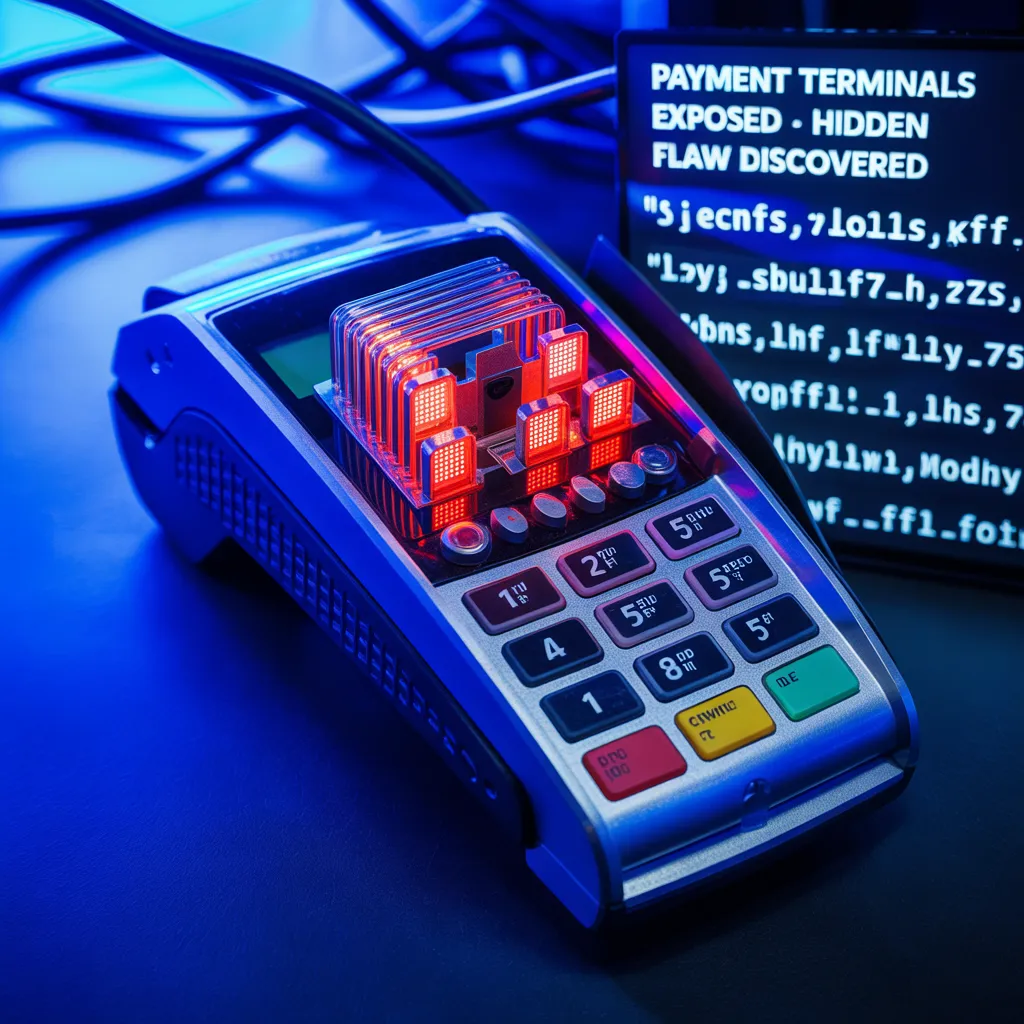
Payment Terminals Exposed: Critical Vulnerability in Worldline Yomani XR Uncovered

💳 Payment Terminals Exposed: Critical Vulnerability in Worldline Yomani XR Uncovered
A recent security discovery has revealed a serious vulnerability in the Worldline Yomani XR payment terminal, a device commonly found in grocery stores, cafes, and retail businesses across Switzerland.
Despite being designed as a hardened, tamper-protected payment system, researchers found that the device’s maintenance port grants full root access—allowing an attacker to take control in under 60 seconds.
🔍 The Discovery: A Hidden Gateway to Root Access
At first glance, the terminal appears secure. Network scans show no open ports, and its outer casing is equipped with strong tamper-detection features.
However, during a deeper hardware inspection, researchers uncovered a debug connector tucked behind a service hatch on the back panel. By connecting a basic serial cable and rebooting the terminal, they accessed a Linux boot log—and what followed was alarming.
When the terminal finishes booting, entering the command “root” at the login prompt grants full system access—no password required.
This unrestricted root shell enables attackers to:
Install malicious firmware
Capture or alter transaction data
Launch lateral attacks into connected back-end systems
🧠 Under the Hood: Dual-Core Design, Dual Risk
The Yomani XR runs on a custom dual-core Arm-based architecture called “Samoa II.”
One core runs a standard Linux environment that handles network operations and terminal logic.
The second, secure core, executes encrypted firmware responsible for payment card processing, keypad input, and display output.
While the secure processor cannot be directly tampered with unless hardware protections are broken, the Linux core remains vulnerable. Attackers with shell access could intercept network traffic, block security updates, or deploy persistent backdoors that may later target the secure core indirectly.
🧱 Tamper Protection—But Not Everywhere
Physically, the Yomani XR showcases impressive security engineering:
Pressure-sensitive zebra strips and copper traces detect intrusion attempts
Tamper alerts permanently disable the terminal when triggered
A coin-cell battery ensures tamper monitoring remains active even when unplugged
Yet, the debug port bypasses all these safeguards, undermining the terminal’s otherwise robust protection mechanisms.
⚠️ The Bigger Threat
Although no public evidence suggests active exploitation or stolen card data through this vector, the presence of an unprotected root interface is a critical design oversight.
Even limited physical access—such as during device servicing or installation—could allow attackers to compromise terminals across entire retail networks.
🛠 Recommended Actions for Merchants & Providers
Organizations using the Worldline Yomani XR should take immediate precautions:
Inspect terminals for unauthorized modifications or open service hatches.
Contact vendors to confirm that firmware updates addressing this flaw have been applied.
Restrict physical access to payment terminals and monitor them regularly for tampering.
Implement network segmentation to isolate payment devices from administrative systems.
Worldline has acknowledged the vulnerability and released firmware patches to mitigate the issue. However, until updates are fully deployed, merchants remain at risk from a flaw hidden beneath layers of otherwise strong hardware defense.
🔐 Final Thoughts
This discovery underscores a critical truth in cybersecurity:
Even the most secure hardware can be compromised if one overlooked interface remains exposed.
Businesses must stay proactive—verify, patch, and protect—to safeguard customer data and maintain trust at the point of sale.
